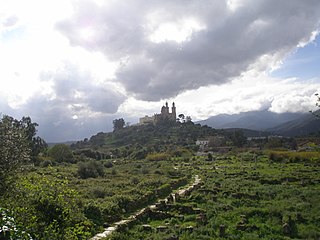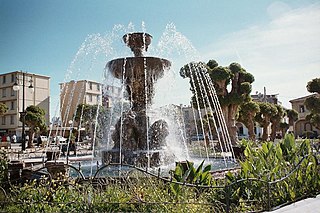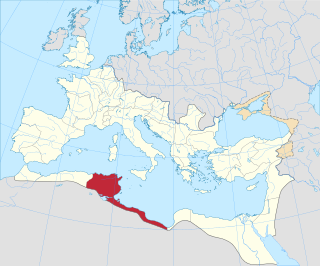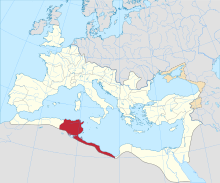
Hippo Regius is the ancient name of the modern city of Annaba, in Algeria. Hippo Regius was a Phoenician, Berber, and Roman city in present-day Annaba Province, Algeria. It was the locus of several early Christian councils and home to the philosopher and theologian Augustine of Hippo.

Cherchell is a town on Algeria's Mediterranean coast, 89 kilometers (55 mi) west of Algiers. It is the seat of Cherchell District in Tipaza Province. Under the names Iol and Caesarea, it was formerly a Phoenician, Carthaginian, and Roman colony and the capital of the kingdoms of Numidia and Mauretania.

Simminensis is an ancient and titular episcopal see of the Roman province of Africa Proconsularis in modern Tunisia, and a suffragan diocese of the Archdiocese of Carthage.

The Titular Bishopric of Vita (Vitensis) was a Roman–Berber civitas in Africa Proconsularis. It is a former Christian diocese and Latin Catholic titular see. The name Vita means life.

Buruni is an ancient city of the Maghreb, in North Africa. The city has been identified with ruins at Henchir-El-Dakhla in Tunisia.

Vulturia was a Roman and Vandal era town of Mauretania Caesariensis in Roman North Africa.

Castra Nova was a Roman-era city and diocese in Mauretania, Africa Proconsulare. The town is identified with the stone ruins at Mohammadia, Mascara in modern Algeria. It is now a Roman Catholic titular see.
Nigizubi was a Roman–Berber town in the province of Numidia. It was located in modern Algeria. It was also the seat of an ancient bishopric.during the Vandal Kingdom and Roman Empire. The exact location of the ancient town is now lost but it was somewhere in north-eastern Algeria.

Abaradira was a Roman era city in the Roman province of Byzacena. Its exact location is unknown but it would have been in the central part of what is today Tunisia.

Pocofeltus was a Roman–Berber civitas (town) in the province of Africa Proconsularis, located in present-day Tunisia. It was also the seat of an ancient Roman Catholic diocese.
Cenculiana was a Roman era town in Roman North Africa.
Theudalis, also known as Teudali, was a Roman era civitas (town) of the Roman province of Africa Proconsularis. The ancient city is tentatively identifiable with ruins at Henchir-Aouam in Tunisia.

Tagarbala was a Roman–Berber civitas of the province of Byzacena during late antiquity. It was a Roman Catholic diocese.

Foratiana was an ancient Roman-Berber city in the province of Byzacena and Africa Proconsularis in the Sahel region of Tunisia.

Scebatiana was an ancient civitas of the Roman Province of Byzacena during the Roman Empire and late antiquity. The exact location of the town is unknown, but is thought to be somewhere in southern Tunisia.

Floriana, Mauritania was an ancient Roman–Berber civitas in the province of Mauretania Caesariensis in Africa Proconsulare. It existed during the Vandal Kingdom, Byzantine Empire, and Roman Empire. The town of Floriana has been tentatively identified with ruins at Letourneux, Derrag in northern Algeria.

Masuccaba an ancient Roman town in the Roman province of Mauretania Caesariensis.
The diocese of Garba is a suppressed and titular see of the Roman Catholic Church.

Præsidium also known as Praesidium Diolele was a town of the Roman Province of Byzacena in North Africa during the Roman Empire.













